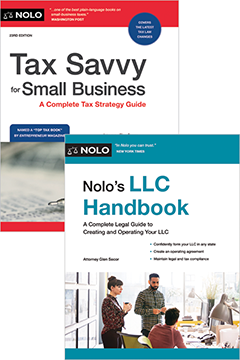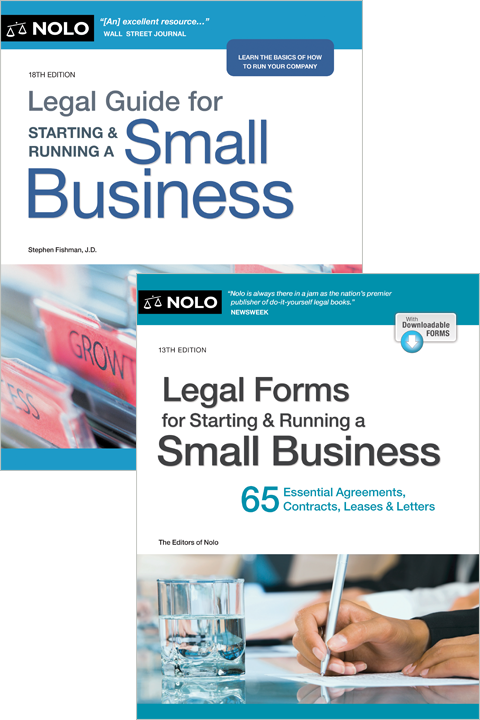S corporations limit owners' liability and offer tax benefits. Find out if you can elect an S corporation status and how and when to make the election.
Many entrepreneurs have two goals when choosing a structure for their business: protecting their personal assets from business claims (limited liability) and having business profits taxed on their individual tax returns.
Not long ago, an S corporation (S corp) was the only choice for these business owners. In recent years, however, S corps have been largely replaced by limited liability companies (LLCs). However, due to tax changes brought about by the Tax Cuts and Jobs Act ("TCJA"), S corps could make a comeback.
You'll learn what an S corporation is and how the S corp election can benefit you. This article also explains who's eligible to become an S corp, how to make the election, and when to file.
What Is an S Corporation?
An S corp is a regular corporation that has elected "S corporation" tax status. Forming an S corp lets you enjoy the limited liability of a corporate shareholder but pay income taxes as if you're a sole proprietor or a partner in a partnership.
In a regular corporation (also known as a "C corporation"), the company itself is taxed on business profits. The owners pay individual income tax only on money they receive from the corporation as salary, bonuses, or dividends. (For more on corporate taxation, see how corporations are taxed.)
By contrast, in an S corp, all business profits "pass through" to the owners, who report them on their personal tax returns (like in sole proprietorships, partnerships, and LLCs). The S corp itself doesn't pay any income tax. Although, if an S corp has more than one owner, it must file an informational tax return—like a partnership or LLC—to report each shareholder's portion of the corporate income.
Most states follow the federal pattern when taxing S corps: They don't impose a corporate tax, choosing instead to tax the business's profits on the shareholders' personal tax returns. A few states, however, tax an S corp like a regular corporation—such as New Hampshire, Tennessee, and Texas.
The tax division of your state's treasury department can tell you how S corps are taxed in your state.
Should You Elect S Corporation Status?
If you want limited liability and more favorable taxation, you should consider becoming an S corp. Operating as an S corp might be wise for several reasons:
- Forming an S corp generally allows you to pass business losses through to your personal income tax return, where you can use it to offset any income that you (and your spouse, if you're married) have from other sources.
- When you sell your S corp, your taxable gain on the sale of the business can be less than it would've been had you operated the business as a regular corporation.
- S corp shareholders aren't subject to self-employment taxes on the distributions they receive from the corporation (active LLC owners are). These taxes, which add up to more than 15% of your income up to an annual ceiling, are used to pay your Social Security and Medicare taxes. However, S corp shareholders ordinarily work as employees of the corporation and must pay employment tax on their employee compensation.
- Since S corps are pass-through entities, their shareholders can qualify for the pass-through tax deduction established by the Tax Cuts and Jobs Act. From 2018 through 2025, S corp shareholders might be eligible to deduct up to 20% of their share of the S corp's income. But there are many restrictions on this deduction. At some income levels, the deduction is limited to 50% of the W2 wages the business pays. The fact that the S corp's owners also typically work as employees of the corporation can help them qualify for the deduction.
Fortunately, a decision to elect to be an S corp isn't permanent. If your business later becomes more profitable and you find there are tax advantages to being a regular corporation, you can drop your S corp status after a certain amount of time.
Who Can Elect S Corporation Status?
An S corp has many benefits but not everyone can take advantage of them. Your corporation can elect to become an S corp only if it meets the following requirements:
- Each S corp shareholder must be a U.S. citizen or resident.
- An S corp can't have more than 100 shareholders.
- S corp profits and losses can be allocated only in proportion to each shareholder's interest in the business.
- An S corp shareholder can't deduct corporate losses that exceed their "basis" in corporate stock—which equals the amount of the shareholder's investment in the company plus or minus a few adjustments.
- An S corp can't deduct the cost of fringe benefits provided to employee-shareholders who own more than 2% of the corporation.
If your corporation is eligible to become an S corp and the benefits align with your company's needs, then you'll need to elect the S corp status during the correct window of time to receive the tax benefits.
How to Elect S Corporation Status With the IRS
To create an S corp, you must first create a regular corporation by filing articles of incorporation with your Secretary of State's office or your state's corporations division. Then, to be treated as an S corp, all shareholders must sign and file IRS Form 2553.
When Should You File for an S Corp Election?
The timing for filing an S election can be tricky. How the deadlines operate depends on whether the corporation is new and in its first tax year when it files the election, or whether it's been operating more than one year and had a prior tax year before filing the election.
New Corporations
A new corporation must elect its S status no more than 2 months and 15 days after the beginning of its first tax year. Elections made after this deadline won't apply until the following year unless the corporation qualifies for special relief (as explained later).
Consider this example. Suppose Acme Corporation is a brand new corporation that began its first tax year on January 7, 2015. For it to timely elect S corp status for 2015, it must file Form 2553 sometime during the period from January 7 through March 21, 2015. (Acme's 2-month period would end March 6 and 15 days after that date would be March 21.)
Because the corporation had no prior tax year, an election made before January 7 wouldn't be valid. An election made after March 21, 2015, wouldn't apply until 2016 (unless it qualifies for special relief).
Existing Corporations With Prior Tax Years
Corporations don't have to choose to elect S status right away. They can operate as regular C corporations for as long as they want to before making the election. However, for an S corp election to be timely for the current tax year, it must be filed either:
- at any point during the previous tax year, or
- within 2 months and 15 days after the start of the current tax year.
Consider the following example. XYZ Corporation was formed back in 2013 and has been operating as a regular C corporation. Its tax year corresponds with the calendar year, so its tax year always starts on January 1 and ends on December 31 each year.
XYZ wants to qualify as an S corp starting in 2016. To do so, it must file Form 2553 any time during 2015, or no later than March 15, 2016 (two months and fifteen days after January 1, 2016, the first day of its current tax year). If it files the election after March 15, 2016, the election won't be effective until 2017 unless it qualifies for special relief.
What If You File for an S Election Too Late?
If you file for the election after the deadline but want the S status to take effect that current tax year, you might qualify for special relief. If you qualify, your S election status will take effect the current tax year—instead of the next year—despite the late filing.
The IRS will grant a corporation relief from the late filing of Form 2553 if it meets all of the following requirements:
- The corporation failed to qualify as an S corp solely because Form 2553 wasn't timely filed.
- The corporation and all of its shareholders reported their income consistent with S corp status for the year the election should've been made and for all taxable years after.
- Less than three years and 75 days have passed since the effective date of the election. (However, if more than three years and 75 days have passed, special relief is available if additional requirements are met—see Rev. Proc. 2013-36.)
- The corporation either had reasonable cause for the late filing or inadvertently failed to timely file Form 2553 and acted diligently to correct its mistake.
The corporation must attach a statement along with Form 2533 explaining why it had reasonable cause for the late filing or that it inadvertently failed to timely file. The words, "Filed pursuant to Rev. Proc. 2013-30" must be added to the top of Form 2533. Both Form 2553 and the attached statement must be signed by every shareholder.
Alternatives to an S Corporation
You can get the benefits of limited liability and pass-through taxation (including the pass-through tax deduction) by creating an LLC. Because an LLC offers its owners the significant advantage of greater flexibility in allocating profits and losses, and because LLCs aren't subject to the many restrictions of S corps, forming an LLC can be a better choice.
However, in some cases, an S corp's shareholders might qualify for the pass-through deduction while an LLC's owners with the same amount of income might not.
Talk To a Small Business Attorney
If you're still unsure whether an S corp is right for you or have more questions about how and when to file, you should talk to a small business lawyer. They can explain how the S corp election applies to your specific situation and file the IRS paperwork for you.



